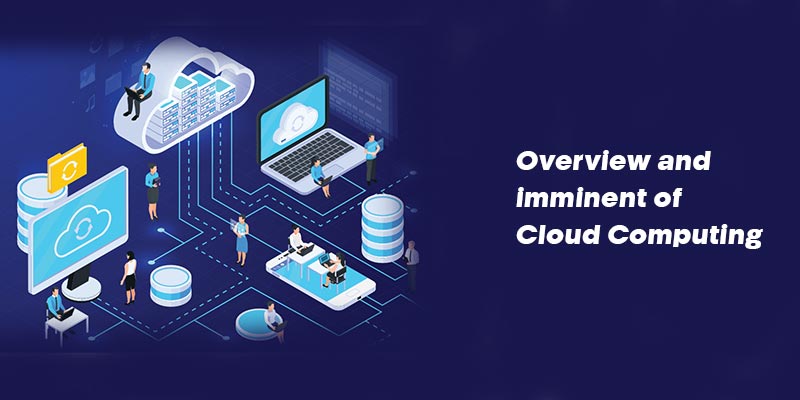
Cloud computing is an Information Technology Paradigm which is the practice of using the network of remote servers that are hosted on the internet to manage, store and process data, rather than a personal computer. It is evolved from the concept of utility computing, as the province of storage and computational resources as a service.
What is Cloud Computing?
Cloud Computing is defined as the model of enabling on-demand network access to a shared pool of configuring computing resources such as servers, networks and much more. It can be quickly released with minimal management service provider interaction. There are five essential characteristics, four deployment, and three service models. Cloud Computing Courses will help you to become an expert in Cloud world.
Types of Cloud Computing
Basic cloud classifications are
- Public Cloud
- Private Cloud
- Hybrid cloud
According to the variations cloud is classified as follows:
- Community Cloud
- Virtual hybrid Cloud
Architecture of Cloud Computing
The architecture consists of loosely coupled cloud components. Cloud is classified as
- Front End
- Back End
Each end is connected to a network called intranet. The front part refers to the client part which consists of applications and interfaces obtained to access Cloud Computing platform. Whereas the back-end refers to the cloud itself which comprises of huge virtual machines, deployment model and much more.
Characteristics of Cloud Computing
The key characteristics of Cloud Computing are as follows:
- Rapid elasticity which means the elastic can be released and provisioned automatically to scale inward and outward commensurate with demand.
- Resource pooling is to serve the multiple consumers by computing resources using a multi-tenant model.
- On-demand self-service a consumer’s unilateral provision capabilities such as network storage and time server, as needed by human action automatically.
- Cloud systems automatically optimize and control by a metering capability at some level of appropriate abstraction to the server is called as measured service.
- Capabilities of broad network access are available to get accessed through standard mechanisms to promote heterogeneous thick or thin client platforms.
Service Models of Cloud Computing
Cloud Computing provides various service models but there are only three models which are more important which is to be discussed. They are
Infrastructure As A Service (IaaS): IaaS of Cloud Computing provides the hardware and software components that lay the foundation of every infrastructure to cloud end users. It’s in the hands of the end user to hire any of these services. This concept leads to the self-activating deployment of scalable and distributed.
Platform As A Service (PaaS): It makes users develop applications and services through the internet. Some of the benefits of PaaS are web developers, software developers, and business magnets.
Software As A Service (SaaS): It is a software distribution model which is a third party authorizing applications which make them available on the internet. SaaS is the top layer of cloud computing services which differs from other traditional software services. The traditional software needs their own software and hardware components, but SaaS make users independent by using integrated service by cloud operator.
Cloud Computing Trends 2017 and upcoming years
Cloud computing has helped many enterprises for the past few years. Hybrid Cloud and BYOD are the upcoming top trend that will continue over the next few years in the tech industry. 39 percent of decision makers are building a private cloud, 33 percent are building public cloud and the other survives are planning to implement some form of cloud computing. If you are looking to take Cloud Computing Training in Chennai contact FITA Academy.
